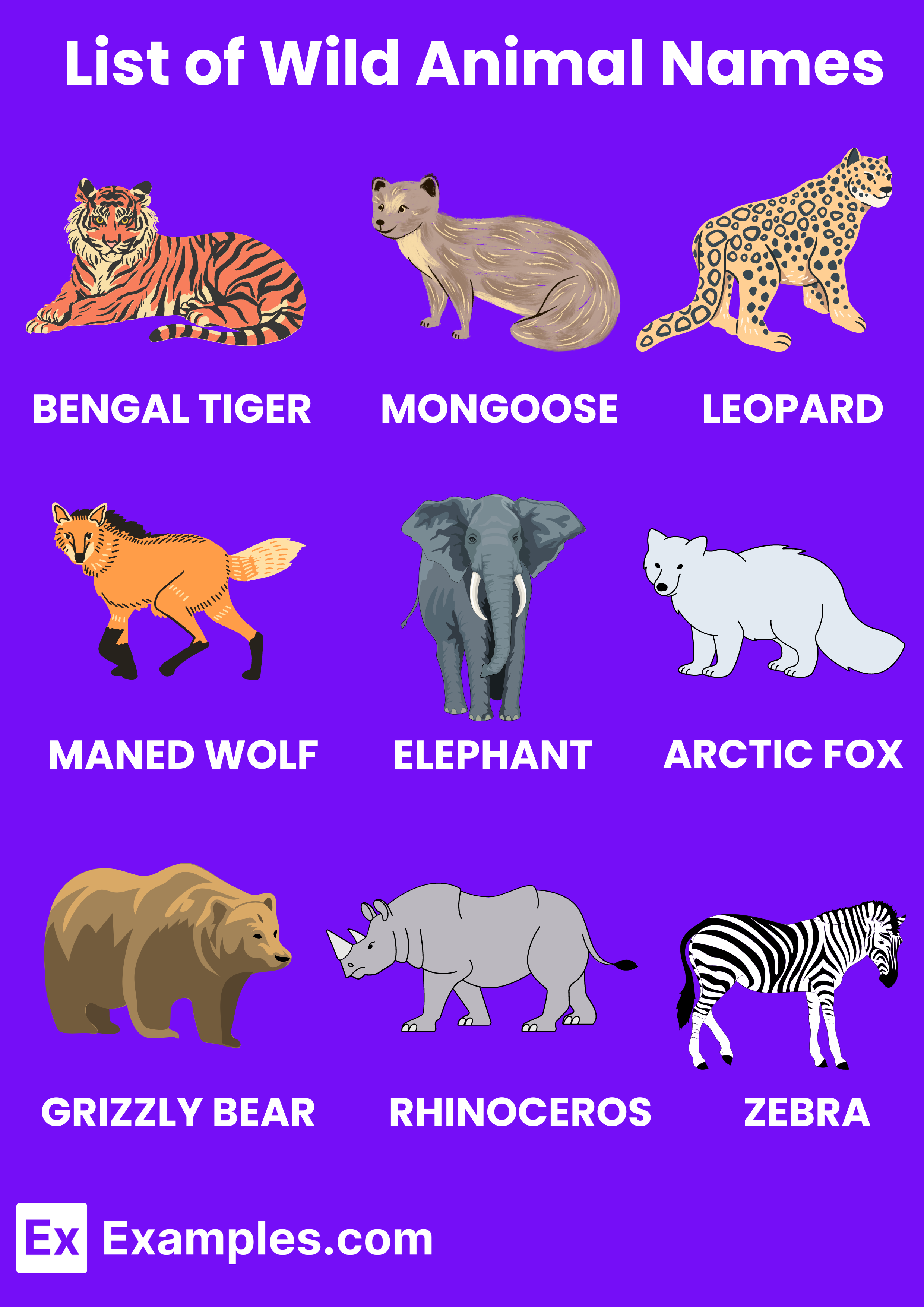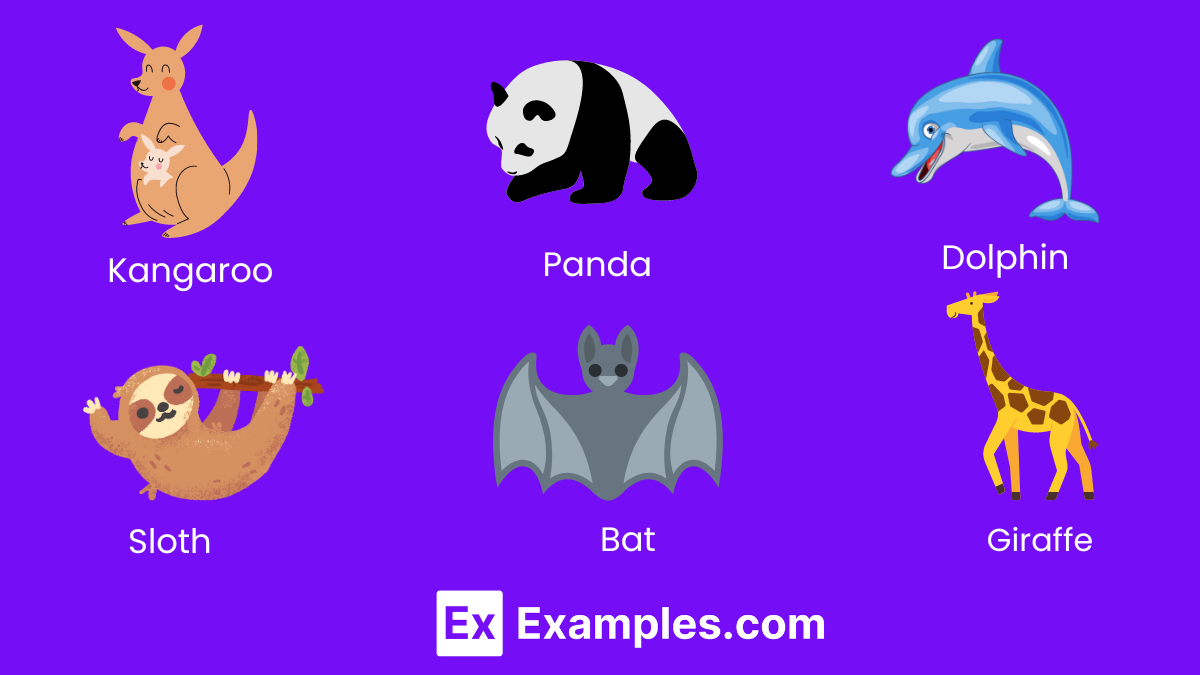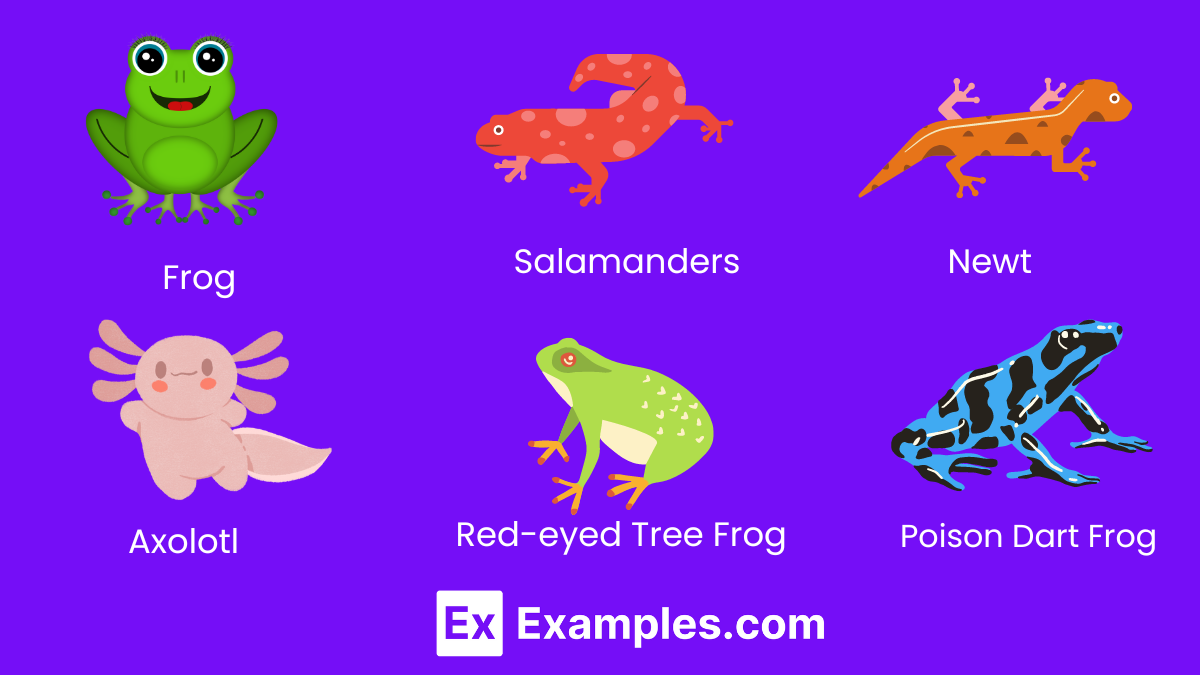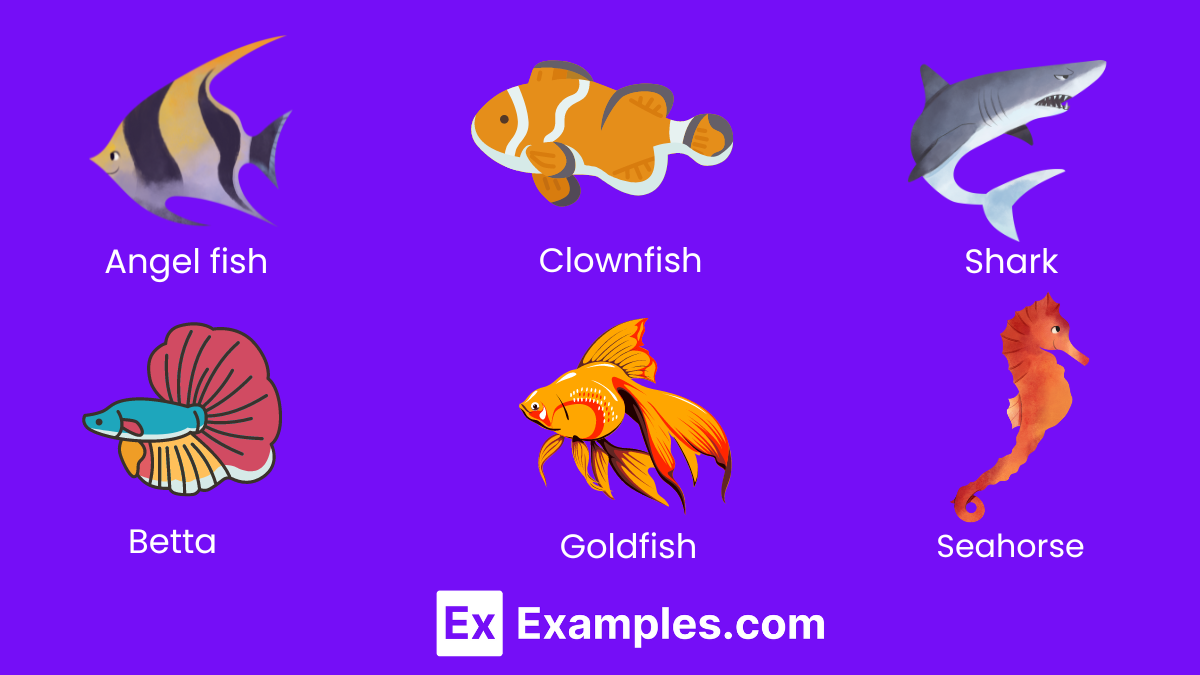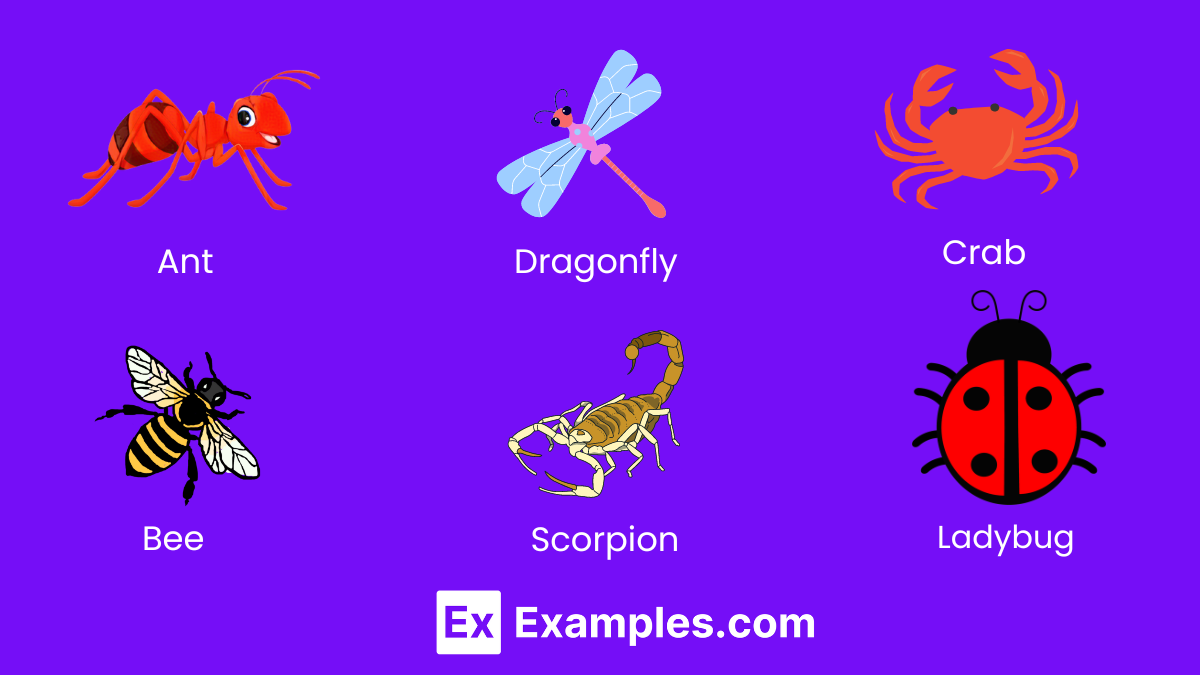100+ Wild Animal Names: Meaning , Types, Importance, PDF
Embark on a fascinating expedition into the heart of nature’s untamed wilderness with our compelling exploration of wild animal names. This journey unveils the diverse tapestry of creatures that roam the earth, from the dense, mysterious jungles to the vast, arid deserts and the deep blue mysteries of the oceans. Discover the exotic, the rare, and the astonishing species that share our planet, each with a name that tells a story of its unique essence and habitat. Join us as we traverse the globe, uncovering the rich biodiversity that lies within the wild.
Download List of Wild Animal Names - PDF
List of Wild Animal Names
Dive into the heart of nature’s untamed realms with our comprehensive exploration of wild animal names. This carefully curated collection showcases the incredible diversity and richness of wildlife that inhabits our planet. From the majestic and powerful to the small and elusive, each name carries the essence of the creature’s spirit and the untold stories of their survival and adaptation in the wild. These names not only reflect the physical attributes and behaviors of these animals but also their roles in their respective ecosystems. As we unveil this extensive list, we invite you to marvel at the vast array of life forms that thrive in the wilderness, from the dense forests and towering mountains to the vast savannas and deep oceans.
| Elephant | Bengal Tiger | Chimpanzee | Dingo |
| Eurasian Lynx | Fennec Fox | Grizzly Bear | Himalayan Tahr |
| Iberian Lynx | Jaguar | Koala | Lion |
| Maned Wolf | Narwhal | Orangutan | Prairie Dog |
| Quokka | Red Panda | Snow Leopard | Tasmanian Devil |
| Uakari | Vaquita | Walrus | Xerus |
| Yellow Mongoose | Zebra | Arctic Fox | Bonobo |
| Caracal | Dwarf Crocodile | Emperor Tamarin | Flying Squirrel |
| Gharial | Harpy Eagle | Impala | Javan Rhino |
| Kinkajou | Lynx | Margay | Numbat |
| Ocelot | Pangolin | Quoll | Raccoon Dog |
| Sable Antelope | Takin | Umbrellabird | Vicuña |
| Wolverine | Yak | Zorilla | Anteater |
| Bushbaby | Capybara | Dhole | Echidna |
| Fruit Bat | Gelada | Honey Badger | Ibex |
| Jackal | Kudu | Leopard Seal | Mongoose |
| Nilgai | Okapi | Pika | Quetzal |
| Red Fox | Serval | Tapir | Urial |
| Vervet Monkey | Wombat | Yellow-footed Rock Wallaby | Zebra Shark |
| Aardvark | Binturong | Cheetah | Dingiso |
| Elephant Seal | Falcon | Gibbon | Hyena |
| Indri | Jaguarundi | Giraffe | Langur |
| Meerkat | Nandu | Oryx | Platypus |
| Quokka | Ringtail | Saiga | Tarsier |
| Uakari | Vulture | Warthog | Xenopus |
| Yabby | Zebu | Agouti | Barbary Macaque |
| Cassowary | Dugong | Elf Owl | Galápagos Tortoise |
| Hedgehog | Iguana | Jerboa | Kakapo |
| Lorikeet | Mandrill | Nene | Opossum |
| Puffin | Quagga | Rhinoceros | Sloth Bear |
| Tamarin | Upland Sandpiper | Vaquita | Woolly Monkey |
| Xantus’s Hummingbird | Yellow-billed Oxpecker | Zorilla | Axolotl |
| Bearded Vulture | Clouded Leopard | Desert Tortoise | Emperor Penguin |
| Flamingo | Golden Eagle | Hawaiian Monk Seal | Irrawaddy Dolphin |
| Javan Hawk-Eagle | King Cobra | Leopard Gecko | Musk Deer |
| Nightjar | Olive Baboon | Proboscis Monkey | Quoll |
| Red Kangaroo | Siberian Tiger | Thorny Devil | Urial |
| Vampire Bat | White Rhino | Yellow Anaconda | Zone-tailed Hawk |
Types of Wild Animals
Wild animals encompass a vast range of species that thrive in natural habitats across the globe, untouched by domestication. These creatures can be broadly categorized into several types based on their ecological roles, physical characteristics, and habitats. Understanding these categories helps in appreciating the diversity and complexity of wildlife and their crucial roles in maintaining ecological balance.
1. Mammals
Dive into the fascinating world of mammals, a diverse group characterized by their warm-blooded nature, hair or fur, and the nurturing of their young through milk. This category includes some of the most intelligent and adaptable species on Earth, from the vast savannas to the deep blue oceans. Discover these remarkable creatures, each with its unique traits and behaviors, perfect for enriching your English vocabulary and understanding of the animal kingdom.
- Elephant – The largest land animal, known for its intelligence and strong social bonds.
- Tiger – A powerful predator with distinctive orange and black stripes.
- Kangaroo – A marsupial famous for its strong hind legs and hopping movement.
- Giraffe – The tallest mammal, known for its long neck and legs.
- Panda – A beloved bear mostly recognized for its black-and-white fur.
- Dolphin – An intelligent marine mammal known for its playful nature.
- Sloth – A slow-moving tree-dweller known for its leisurely pace of life.
- Lion – Often called the “King of the Jungle,” known for its majestic mane.
- Bat – The only mammal capable of true flight, often found in caves.
- Zebra – Known for its distinctive black-and-white striped coat.
2. Birds
Birds are a captivating group of warm-blooded vertebrates, celebrated for their ability to fly, distinctive feathers, and varied songs. From the tiny hummingbird to the majestic eagle, birds come in an astonishing variety of sizes, colors, and habitats. They play essential roles in ecosystems, making them a fascinating subject for enhancing vocabulary and fostering an appreciation for biodiversity.
- Eagle – A symbol of power and freedom, known for its keen eyesight.
- Parrot – A colorful bird famous for its ability to mimic sounds.
- Owl – Known for its nocturnal habits and silent flight.
- Penguin – A flightless bird adapted to life in the water.
- Hummingbird – The smallest bird, known for its rapid wing flapping.
- Peacock – Known for its colorful tail feathers and courtship display.
- Swan – Symbolizes grace and beauty with its long neck and white feathers.
- Flamingo – Recognized for its pink feathers and one-legged stance.
- Robin – A common garden bird known for its red breast.
- Crow – Known for its intelligence and adaptability.
3. Amphibians
Amphibians are unique creatures that begin their lives in water and undergo metamorphosis to live on land. This group includes frogs, toads, salamanders, and newts, known for their moist skin and fascinating life cycles. Amphibians play a crucial role in the balance of ecosystems and serve as indicators of environmental health, making them an excellent topic for educational exploration.
- Frog – Known for its jumping abilities, croaking sounds, and smooth skin.
- Toad – Similar to frogs but with drier, bumpy skin.
- Salamander – A lizard-like amphibian, often found in moist habitats.
- Newt – A type of salamander with a distinct larval stage.
- Axolotl – Known for its ability to regenerate limbs, native to Mexico.
- Tree Frog – Known for its climbing abilities and living in trees.
- Bullfrog – The largest frog in North America, known for its deep call.
- Caecilian – A legless amphibian that resembles a worm or snake.
- Red-eyed Tree Frog – Known for its vibrant colors and red eyes.
- Poison Dart Frog – Known for its brightly colored skin and toxicity.
4. Fish
Explore the vast underwater world of fish, a diverse group of aquatic creatures inhabiting oceans, lakes, and rivers. From the colorful coral reef dwellers to the deep-sea mysteries, fish exhibit a wide range of adaptations, sizes, and behaviors. Studying fish not only expands vocabulary but also offers insights into marine biology and the importance of water ecosystems.
- Salmon – Known for its migratory behavior, swimming upstream to spawn.
- Clownfish – Famous for its symbiotic relationship with sea anemones.
- Shark – A top predator in the ocean, known for its sharp teeth.
- Tuna – A fast-swimming fish prized for its meat.
- Goldfish – A popular freshwater aquarium fish, known for its varied colors.
- Seahorse – Known for its upright swimming and the male’s role in childbirth.
- Angelfish – A tropical fish known for its vibrant colors and flat body.
- Betta – Known for its vibrant colors and aggressive behavior.
- Pufferfish – Known for its ability to inflate into a ball as a defense mechanism.
- Koi – An ornamental variety of carp known for its bright colors and patterns
5. Invertebrates
Delve into the diverse world of invertebrates, the vast majority of animal species characterized by their lack of a backbone. This group encompasses a wide array of life forms, from the simple sponges to the more complex mollusks and echinoderms. Invertebrates are crucial for ecological balance, offering a unique perspective on adaptation and survival. Their study enriches our vocabulary and provides a deeper understanding of biology and the interconnectedness of life.
- Jellyfish – A marine animal known for its gelatinous body and tentacles.
- Octopus – A highly intelligent mollusk known for its eight arms and camouflage ability.
- Starfish – A sea creature known for its star-shaped body and regenerative abilities.
- Earthworm – An important soil-dwelling creature that aids in decomposition.
- Sea Urchin – A spiny, globular marine animal found on the ocean floor.
- Squid – A fast-swimming cephalopod known for its ink defense mechanism.
- Coral – Marine invertebrates that form large colonies known as reefs.
- Butterfly – Known for its metamorphosis from caterpillar to a winged adult.
- Snail – A slow-moving creature with a spiral shell.
- Sponge – A simple aquatic animal known for its porous body.
6. Arthropods
Explore the fascinating realm of arthropods, the largest phylum in the animal kingdom, which includes insects, arachnids, crustaceans, and myriapods. These creatures are characterized by their segmented bodies, exoskeletons, and jointed appendages. Arthropods play vital roles in ecosystems as pollinators, decomposers, and sources of food for other animals. Their study is essential for understanding biodiversity and the intricate web of life.
- Spider – An eight-legged arachnid known for spinning webs.
- Butterfly – A flying insect known for its colorful wings and lifecycle.
- Ant – A social insect known for its structured colony life.
- Crab – A crustacean with a hard shell and pincers, living in water or on land.
- Bee – A vital pollinator known for producing honey and beeswax.
- Scorpion – A predatory arachnid known for its venomous sting.
- Ladybug – A beetle known for its red and black spotted appearance.
- Centipede – A many-legged arthropod known for its speed and venom.
- Dragonfly – Known for its large eyes and agile flight.
- Lobster – A large marine crustacean known for its claws and as a seafood delicacy
Importance of Learning the Names of Wild Animals
Learning the names of wild animals plays a crucial role in various aspects of education, conservation, and cultural appreciation. Understanding these names not only enriches our knowledge but also fosters a deeper connection with the natural world. Here’s a closer look at the importance of this knowledge:
1. Enhances Biological Understanding
Knowing the names of wild animals is foundational to studying biology and ecology. It allows individuals to identify different species, understand their roles within ecosystems, and appreciate the biodiversity of our planet. This knowledge is crucial for students, researchers, and anyone interested in the natural sciences.
2. Conservation Efforts
Identifying and naming wild animals is a key step in conservation. Recognizing different species and their habitats helps in assessing their conservation status, understanding threats they face, and implementing measures to protect them. Knowledge about animals can inspire and motivate people to participate in or support conservation initiatives.
3. Cultural Significance
Many cultures have deep connections with certain wild animals, which are often reflected in their myths, legends, and totems. Learning about these animals and their names can foster respect and appreciation for different cultural perspectives and the ways in which various societies relate to the natural world.
4. Promotes Environmental Awareness
Awareness of the diversity of wild animals encourages a greater understanding of the environment and the importance of ecosystems. It helps people recognize the impact of human activities on wildlife and the importance of sustainable living practices to preserve these species for future generations.
5. Supports Ecotourism
Knowledge of wild animals enhances the ecotourism experience. Tourists who are informed about the species they encounter are more likely to have enriching and respectful interactions with wildlife. This can lead to increased support for wildlife sanctuaries, national parks, and protected areas, contributing to local economies and conservation efforts.
6. Fosters Empathy and Ethical Considerations
Understanding more about wild animals, their behaviors, and their environments can foster empathy towards them. Recognizing that animals have their own needs, social structures, and challenges encourages ethical considerations in how we interact with them, both in the wild and in captivity.
7. Scientific and Educational Research
In the realm of scientific research, knowing and correctly using the names of wild animals is fundamental. It allows for accurate communication of research findings, collaboration among scientists worldwide, and the building of a comprehensive body of knowledge about biodiversity.
How do wild animals differ from domesticated animals?
| Aspect | Wild Animals | Domesticated Animals |
|---|---|---|
| Dependency | Wild animals are independent and fend for themselves, finding food, water, and shelter on their own. | Domesticated animals rely on humans for food, water, shelter, and care. |
| Behavior | They have natural behaviors suited for survival in the wild and may be more aggressive or elusive. | Their behaviors are often modified to be more suitable for living in close proximity to humans or for specific tasks. |
| Breeding | Breeding occurs naturally based on instinctual mating patterns and environmental factors. | Breeding is often controlled by humans to ensure certain traits or to prevent overpopulation. |
| Habitat | They live in natural habitats like forests, deserts, oceans, and jungles. | Typically live in human-made environments like homes, farms, or zoos. |
| Genetics | Have a wide genetic diversity due to natural selection. | Genetic diversity may be reduced due to selective breeding practices. |
| Interaction | Interaction with humans is minimal and usually occurs in their natural habitat. | Regular interaction with humans, often serving companionship, work, or production purposes. |
| Adaptation | Adaptations are aimed at survival and thriving in the wild. | Adaptations are often related to cohabitation with humans or enhanced productivity for human use. |
| Diet | Follow natural diets based on what is available in their environment. | Diets are often provided or supplemented by humans, sometimes including processed feeds. |
| Life Cycle | Life cycle and behaviors are influenced by natural rhythms and environmental factors. | Life cycles can be influenced or regulated by human intervention, such as through veterinary care. |
| Conservation Status | Many are subject to conservation efforts due to threats like habitat destruction and poaching. | Generally not the focus of conservation efforts unless they are rare breeds or have wild populations. |
List of Wild Animal Names starting with A-Z
Wild Animals Starting with A
| Animal Name | Animal Name |
|---|---|
| African Elephant | Arctic Fox |
| Anaconda | Antelope |
| Armadillo | Aardvark |
| Albatross | Axolotl |
Wild Animals Starting with B
| Animal Name | Animal Name |
|---|---|
| Bengal Tiger | Bonobo |
| Bison | Baboon |
| Black Bear | Bandicoot |
| Blue Whale | Bushbaby |
Wild Animals Starting with C
| Animal Name | Animal Name |
|---|---|
| Cheetah | Chimpanzee |
| Cougar | Coyote |
| Crocodile | Capybara |
| Cassowary | Caracal |
Wild Animals Starting with D
| Animal Name | Animal Name |
|---|---|
| Dingo | Dolphin |
| Dromedary Camel | Duckbill Platypus |
| Dragonfly | Deer |
| Dugong | Damselfly |
Wild Animals Starting with E
| Animal Name | Animal Name |
|---|---|
| Eagle | Echidna |
| Elephant Seal | Elk |
| Emu | Electric Eel |
| Ermine | Ethiopian Wolf |
Wild Animals Starting with F
| Animal Name | Animal Name |
|---|---|
| Falcon | Flamingo |
| Fennec Fox | Flying Squirrel |
| Ferret | Fossa |
| Finch | Fox |
Wild Animals Starting with G
| Animal Name | Animal Name |
|---|---|
| Gorilla | Gazelle |
| Gila Monster | Giraffe |
| Gnu | Grizzly Bear |
| Gecko | Groundhog |
Wild Animals Starting with H
| Animal Name | Animal Name |
|---|---|
| Hyena | Hippopotamus |
| Harpy Eagle | Hedgehog |
| Humpback Whale | Hornbill |
| Hummingbird | Hawk |
Wild Animals Starting with I
| Animal Name | Animal Name |
|---|---|
| Iguana | Impala |
| Ibex | Indri |
| Ibis | Irish Elk |
| Insectivore | Ivory Gull |
Wild Animals Starting with J
| Animal Name | Animal Name |
|---|---|
| Jaguar | Jackal |
| Jellyfish | Jerboa |
| Junco | Jabiru |
| Jacana | Javan Rhino |
Wild Animals Starting with K
| Animal Name | Animal Name |
|---|---|
| Koala | Kangaroo |
| Kookaburra | Komodo Dragon |
| Kudu | Kiwi |
| Kingfisher | Kinkajou |
Wild Animals Starting with L
| Animal Name | Animal Name |
|---|---|
| Leopard | Lemur |
| Lion | Lynx |
| Llama | Langur |
| Lobster | Ladybird |
Wild Animals Starting with M
| Animal Name | Animal Name |
|---|---|
| Manatee | Mongoose |
| Meerkat | Moose |
| Manta Ray | Macaw |
| Monkey | Mountain Goat |
Wild Animals Starting with N
| Animal Name | Animal Name |
|---|---|
| Narwhal | Newt |
| Numbat | Nightingale |
| Nene | Nilgai |
| Nighthawk | Nutria |
Wild Animals Starting with O
| Animal Name | Animal Name |
|---|---|
| Orangutan | Ocelot |
| Ostrich | Otter |
| Owl | Okapi |
| Octopus | Oryx |
Wild Animals Starting with P
| Animal Name | Animal Name |
|---|---|
| Panda | Panther |
| Parrot | Peacock |
| Penguin | Puma |
| Porcupine | Platypus |
Wild Animals Starting with Q
| Animal Name | Animal Name |
|---|---|
| Quokka | Quail |
| Quoll | Queen Snake |
| Quetzal | Quahog |
| Quokka | Quagga |
Wild Animals Starting with R
| Animal Name | Animal Name |
|---|---|
| Rhinoceros | Raccoon |
| Red Panda | Reindeer |
| Robin | Rattlesnake |
| Raven | Ring-tailed Lemur |
Wild Animals Starting with S
| Animal Name | Animal Name |
|---|---|
| Shark | Sloth |
| Swan | Snow Leopard |
| Squirrel | Saiga |
| Salamander | Sea Lion |
Wild Animals Starting with T
| Animal Name | Animal Name |
|---|---|
| Tiger | Toucan |
| Tapir | Tarsier |
| Turtle | Tasmanian Devil |
| Tarantula | Thorny Devil |
Wild Animals Starting with U
| Animal Name | Animal Name |
|---|---|
| Uakari | Uguisu |
| Umbrellabird | Urchin |
| Uinta Ground Squirrel | Urial |
| Unau (Sloth) | Utonagan (Dog) |
Wild Animals Starting with V
| Animal Name | Animal Name |
|---|---|
| Vulture | Vaquita |
| Vampire Bat | Vicuña |
| Vervet Monkey | Velvet Worm |
| Viper | Vine Snake |
Wild Animals Starting with W
| Animal Name | Animal Name |
|---|---|
| Wolf | Walrus |
| Wombat | Warthog |
| Whale Shark | Woodpecker |
| Wildebeest | Water Buffalo |
Wild Animals Starting with X
| Animal Name | Animal Name |
|---|---|
| Xerus | Xenopus (Frog) |
| Xantus’s Hummingbird | X-ray Tetra |
| Xenarthra (Order) | Xoloitzcuintli (Dog) |
| Xantus’s Murrelet | Xiangxiang (Panda) |
Wild Animals Starting with Y
| Animal Name | Animal Name |
|---|---|
| Yak | Yellowfin Tuna |
| Yellow Mongoose | Yabby |
| Yellowhammer | Yellow-eyed Penguin |
| Yacare Caiman | Yeti Crab |
Wild Animals Starting with Z
| Animal Name | Animal Name |
|---|---|
| Zebra | Zebu |
| Zorilla | Zebrafish |
| Zokor | Zone-tailed Hawk |
| Zebra Shark | Zigzag Salamander |
In conclusion, exploring the names of wild animals opens a window into the remarkable diversity of our planet’s wildlife. From the majestic to the minute, each name carries a story of survival and adaptation. Understanding these names deepens our appreciation for nature’s wonders and underscores the importance of conservation efforts to protect these incredible creatures and their habitats for future generationse



